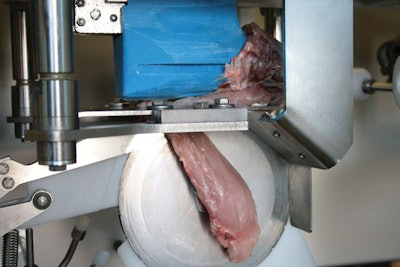
U.S. poultry processors: The time is right to consider automated deboning.
The November issue of WATT PoultryUSA’s cover story will review the state-of-the-art in deboning machinery. I am no veteran processor by any means, but the technology powering modern deboning devices is impressive and the machines’ potential to reduce labor needs on the deboning line by half certainly merits a second look.
Man versus machine
In the past, the choice was easier. Automatic deboning machines didn’t deliver the yield and quality to make it worthwhile and labor was plentiful enough to staff deboning lines, even if turnover was high.
That’s not the case anymore. Today’s devices use advanced sensors, visioning technology and software to measure individual bird carcass dimensions and make cuts to deliver the highest possible yield. At the same time, labor markets are more competitive. Employee retention is still challenging while economics and immigration policy are shrinking the poultry labor pool further.
The manufacturers admit the machine can’t yet beat a good deboning crew in terms of yield. But, the machine is consistent. It doesn’t quit, doesn’t need training and isn’t subject to fatigue and burnout like a human worker.
The writing on the wall?
Automation is already an important part of meeting demand in America’s processing plants. We know more chickens are going to be raised in the near future and processors will be tasked with harvesting and packing those additional birds.
We can also say with certainty that labor challenges aren’t going away anytime soon. In Europe, and elsewhere in the world where workers are hard to find, nearly 100 percent deboning automation is already the industry standard. The U.S. could be going that way too.
I’m not saying automated deboning will solve every problem overnight, but it certainly seems like it can be helpful for facing these two key challenges. If nothing else, the addition of some automated deboning can make life easier for both management and rank-and-file. Transferring a fraction of the work to a machine puts less stress on workers and may even make the job more attractive for plants that are understaffed by reducing the need to work late or work weekends in order to meet demand.
















